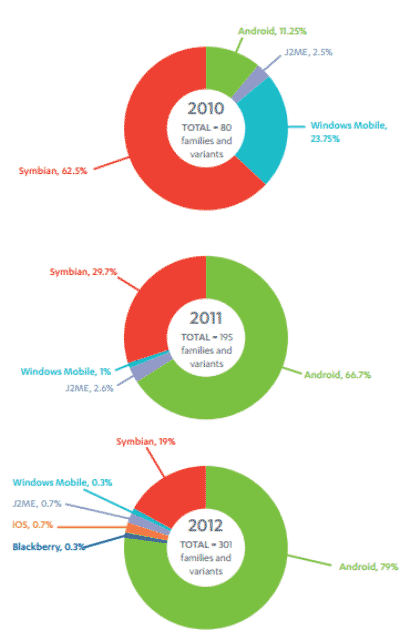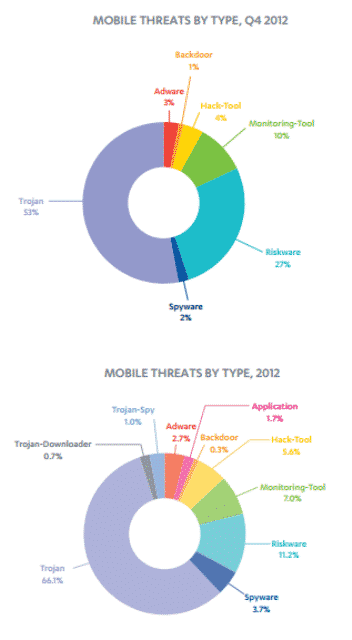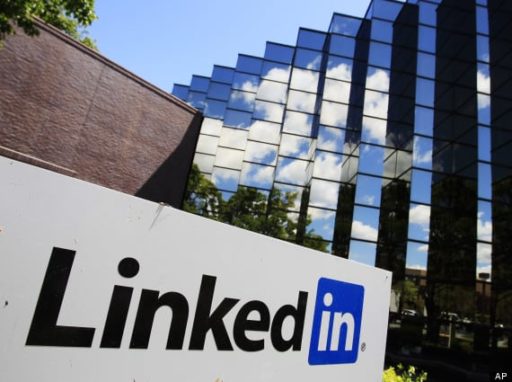Despite worries over new and more sophisticated mobile malware, cyber criminals still overwhelmingly prefer the older, more primitive attack techniques. Recently, mobile security company F-Secure has released a report on the status of mobile threats in 2012. According to that report, hackers prefer to target Android platform to spread malware rather than other OS. The security firm said that Android operating system accounted for 79 percent of all malware infections on smartphones, and the threat is multiplying.
F-Secure security firm published a report last Thursday on the status of mobile threats in 2012. According to that report, Google’s mobile operating system, which has been gaining smartphone market share globally, became the dominant platform targeted by hackers. During the fourth quarter of 2012, 96 percent of all malware was written for Android. The Android OS accounted for 79 percent of all malware infections on smartphones. After Android, Symbian had the second highest share of malware at 19 percent. F-Secure also compiled a data from 2010, 2011 and 2012, to provide a picture of the state of smartphone security.
In 2010, most malware writers targeted Nokia’s Symbian platform first and later Microsoft’s Windows Mobile platform. 62.5 percent of all malware written in 2010 was directed at Symbian and 23.75 percent of malware targeted Microsoft’s Windows Mobile platform. Surprising, in 2010, 11.25 percent of malware targeted Android platform.
In 2011, the scenario turned entirely. Android became one of the top smartphones to the world. But on the other side, the number of malware families and variants surged to 195 from 80 and so shifted the platforms targeted by malware writers. Two-thirds of all malware written in 2011 was aimed Android first, following Symbian trailing at 29.7 percent. Interestingly, only 1 percent malware written targeted the Windows Mobile platform.
But the picture changed less dramatically in 2012. In the year 2012, Android’s market share went up to 68.8 percent from earlier year’s 49.2 percent. 79 percent of all malware was written for Android. On the other hand, malware written for Symbian dropped to 19 percent for the full year. Interestingly, only 0.7 percent of malware written in 2012 targeted Windows Mobile. But it was a bad luck for BlackBerry and iOS. Malware written for BlackBerry and iOS appeared for the first time where 0.3 percent targeted BlackBerry and 0.7 percent targeted iOS. And the number of malware families climbed to a total of about 301 from earlier year’s 195. Trojans were the biggest threat, representing two-thirds of the malware in 2012. Other threats include spyware, riskware, hack tools, monitoring tools and adware. Most of the malware arrived via SMS or premium SMS messages/notifications.
About the malware F-Secure said, “Every quarter, malware authors bring forth new threat families and variants to lure more victims and to update on the existing ones. Malicious actions carried out by these programs include (but are not limited to) installing hidden objects as well as hiding the objects from the user, creating new malicious objects, damaging or altering any data without authorization, and stealing any data or access credentials.”
Source: F-Secure (PDF)
[ttjad keyword=”security”]







No so called “reports” done by private corporations like F-Secure should ever be published without stating who owns them and / or who paid for the generation of that report.
Otherwise its too hard to know who is trying to spread Fear, Uncertainty and Doubt on some competing product?
Statistics are the least believable form of “evidence”.. Like it has often been said “don’t trust any statistics you didn’t falsify yourself”.